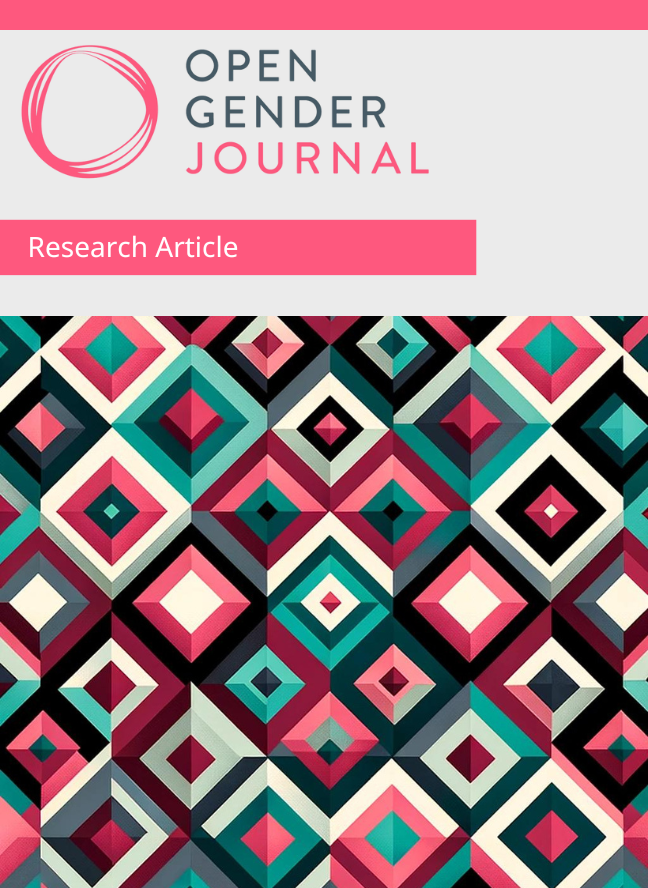Queer Language in Italian Audiovisual Translation
DOI:
https://doi.org/10.17169/ogj.2024.268Keywords:
Censorship, Film, Language, LGBTIQ, QueerAbstract
This study examines the audiovisual translation of queer language, elements, and themes through a contrastive analysis of the Italian reception of the movie “If These Walls Could Talk II”, created by HBO in 2000 and the British series “Sex Education”, first released in January 2019 on Netflix. Several scholars have investigated the role of queer topics in translation, highlighting the tendency to censor potentially problematic or ideologically marked concepts in the target culture. The aim is to call attention to the level of censorship, the strategies related to the period of production and distribution, genre, and reception throughout a diachronic analysis which accounts for audiovisual products circulating with almost twenty years of distance. The research’s findings highlight a strict relationship among prevailing ideology, temporality and censorship in the Italian rendering of queer language and offer some new perspectives to manage the language of queer related issues.
References
Acanfora, Fabrizio (2022): Schwa. Una questione identitaria. Treccani. https://www.treccani.it/magazine/lingua_italiana/speciali/schwa/1_Acanfora.html (10.08.2024).
Acanfora, Fabrizio (2021): In altre parole. Dizionario minimo di diversità. Prima edizione. Saggi pop. Firenze: Effequ.
Baer, Brian James/Kaindl, Klaus (Ed.) (2018): Queering Translation, Translating the Queer. Theory, Practice, Activism. First issued in paperback. New York/London: Routledge, Taylor & Francis Group. doi: 10.4324/9781315505978
Baisa, Vít/Suchomel, Vít (2014): SkELL. Web Interface for English Language Learning.
Bassi, Serena (2020): The Future Is a Foreign Country. Translation and Temporal Critique in the Italian It Gets Better Project. In: Baer, Brian James/Kaindl, Klaus (Ed.): Queering Translation, Translating the Queer. Theory, Practice, Activism. New York/London: Routledge, Taylor & Francis Group, 58–71.
Bassnett, Susan/Lefevere, André (Ed.) (1998): Constructing Cultures. Essays on Literary Translation. Clevedon: Multilingual Matters. doi: 10.21832/9781800417892
Benjamin, Walter (1923): Die Aufgabe des Übersetzers. In: Tableaux Parisiens. Heidelberg: Richard Weißbach.
Berti, Barbara (2022): Lui, lei, loro. Ecco come utilizzare i pronomi per rispettare le persone non binary. Luce. https://luce.lanazione.it/attualita/lui-leiloro-ecco-come-utilizzare-i-pronomi-per-rispettare-le-persone-non-binarysc6qj49g (6. März 2024).
Bertocchi, Federica (2017): The State of Studies and Research on the Homosexual Parent Family in Italy. In: Italian Sociological Review 7 (3), 275. doi: 10.13136/ISR.V7I3.192
Bibbò, Antonio (2013): Il traduttore e il suo lettore. Alcune riflessioni sul rapporto tra contrainte e censura. In: inTRAlinea. online translation journal Special Issue. https://www.intralinea.org/specials/article/1908
Botto, Matteo/Burgio, Giuseppe/Poggio, Barbara/Sarti, Raffaella/Casadei, Thomas (2022): Gli studi di genere in Italia. Passato, presente e futuro di una sfida ancora aperta. In: AG About Gender. Rivista internazionale di studi di genere 11 (21). doi: 10.15167/2279-5057/AG2022.11.21.2000
Bourdieu, Pierre (1993): Language and Symbolic Power. Cambridge, MA: Harvard University Press.
Capuano, Romolo Giovanni (2013): 111 errori di traduzione che hanno cambiato il mondo. Viterbo: Stampa alternativa/Nuovi equilibri.
Chaume, Frederic (2013): Panorámica de la investigación en traducción para el doblaje. In: Trans 17, 13–34. doi: 10.24310/TRANS.2013.v0i17.3225
Chaume, Frederic (2004): Film Studies and Translation Studies. Two Disciplines at Stake in Audiovisual Translation. In: Meta 49 (1), 12–24. doi: 10.7202/009016ar
Crenshaw, Kimberlé (1989): Demarginalizing the Intersection of Race and Sex. A Black Feminist Critique of Antidiscrimination Doctrine, Feminist Theory and Antiracist Politics. University of Chicago Legal Forum: Vol. 1989: Iss. 1, Article 8. Available at: http://chicagounbound.uchicago.edu/uclf/vol1989/iss1/8
De Lucia, Daniel (2015): Il gergo gay italiano. Edizioni Accademiche Italiane.
Deaux, Kay/Major, Brenda (1987): Putting Gender Into Context. An Interactive Model of Gender-Related Behavior. In: Psychological Review 94 (3), 369–389. doi: 10.1037/0033-295X.94.3.369
Erikson, Erik Homburger (1968): Identity. Youth and Crisis. New York: W.W. Norton.
Fairclough, Norman (2015): Language and Power. Third edition. London/New York: Routledge, Taylor & Francis Group.
Fausto-Sterling, Anne (2000a): Sexing the Body. Gender Politics and the Construction of Sexuality. New York, NY: Basic Books.
Fausto-Sterling, Anne (2000b): The Five Sexes; Revisited. In: The Sciences (July/August 2020), 19–23.
Formentelli, Maicol/Ghia, Ghia (2021): “What the hell’s going on?”. A Diachronic Perspective on Intensifying Expletives in Original and Dubbed Film Dialogue. In: Textus (1), 47–73. doi: 10.7370/100396
Gheno, Vera (2022): Femminili singolari. Il femminismo è nelle parole. Quarta edizione. Saggi pop. Firenze: Effequ.
Gillett, Robert/Epstein, B.J. (2017): Queer in Translation. Routledge. doi: 10.4324/9781315603216
Gledhill, Christopher J. (2000): Collocations in Science Writing. Language in Performance. Tübingen: G. Narr.
Guénon, René (2001): East and West. Sophia Perennis. (Original work published 1924.)
Hervey, Sandor/Higgins, Ian (1992): Thinking Translation. A Course in Translation Method. French to English. Routledge. doi: 10.4324/9780203417973
Holmes, Janet/Meyerhoff, Miriam (Ed.) (2003): The Handbook of Language and Gender. Malden, MA: Blackwell. doi: 10.1002/9780470756942
Hunston, Susan/Francis, Gill (2000): Pattern Grammar. A Corpus-Driven Approach to the Lexical Grammar of English. Amsterdam: Benjamins. doi: 10.1075/scl.4
Larkosh, Christopher (2014): Re-Engendering Translation. Transcultural Practice, Gender/Sexuality and the Politics of Alterity. Routledge. doi: 10.4324/9781315759432
Lingiardi, Vittorio/Carone, Nicola (2016): Madri lesbiche, padri gay. Genitori degenerati? In: Giornale italiano di psicologia (1), 57–80. doi: 10.1421/83618
Livia, Anna/Hall, Kira (Ed.) (1997): Queerly Phrased. Language, Gender, and Sexuality. Oxford Studies in Sociolinguistics. Oxford/New York: Oxford University Press. doi: 10.1093/oso/9780195104707.001.0001
Lupetti, Matteo (2021): I pronomi they them non si traducono con “loro” in italiano. Gay.it. https://www.gay.it/pronomi-they-them-non-si-traducono-loroitaliano (6. März 2024).
Manea, Dragos (2016): Leonardo’s Paradoxical Queerness. Da Vinci’s Demons and the Politics of Straightwashing. In: Queer TV in the 21st Century. Essays on Broadcasting from Taboo to Acceptance. Jefferson, NC: McFarland and Company, 159–77.
Marset, Mabel Richart (2015): La censura de la corrección política. La traducción audiovisual a escena. In: Quaderns de Filologia. Estudis Literaris 20, 237–257. doi: 10.7203/qf-elit.v20i0.7539
Molina, Lucía/Hurtado Albir, Amparo (2004): Translation Techniques Revisited. A Dynamic and Functionalist Approach. In: Meta 47 (4), 498–512. doi: 10.7202/008033ar
Morrow, Deana F. (Ed.) (2006): Sexual Orientation and Gender Expression in Social Work Practice. Working with Gay, Lesbian, Bisexual, and Transgender People. New York: Columbia Univ. Press.
Munday, Jeremy (2007): Translation and Ideology. A Textual Approach. In: The Translator 13 (2), 195–217. doi: 10.1080/13556509.2007.10799238
Newmark, Peter (1988): A Textbook of Translation. New York: Prentice-Hall International.
Nida, Eugene Albert (2003): Toward a Science of Translating. With Special Reference to Principles and Procedures Involved in Bible Translating. 2nd impression. Leiden: Brill.
Quaranta, Pasquale (2021): “Non sono né ‘lui’ né ‘lei’”. Come rivolgersi a una persona non binaria. La Repubblica. https://www.repubblica.it/cronaca/2021/05/19/news/singular_they_in_italiano_lui_lei_loro_persone_non_binarie-301786577/ (06.03.2024).
Richards, Christina/Bouman, Walter Pierre/Seal, Leighton/Barker, Meg John/Nieder, Timo O./T’Sjoen, Guy (2016): Non-Binary or Genderqueer Genders. In: International Review of Psychiatry 28 (1), 95–102. doi: 10.3109/09540261.2015.1106446
Santaemilia, José (2018): Sexuality and Translation as Intimate Partners? Toward a Queer Turn in Rewriting Identities and Desires. In: Baer, Brian James/Kaindl, Klaus (Ed.): Queering Translation, Translating the Queer. Theory, Practice, Activism. New York/London: Routledge, Taylor & Francis Group, 11–25. doi: 10.4324/9781315505978-2
Savci, Evren (2011): Queer in Translation. Paradoxes of Westernization and Sexual Others in the Turkish Nation. Los Angeles, California: University of Southern California.
Silverstein, Adam J./Stroumsa, Guy G./Brague, Rémi (2015): The Concept of the Abrahamic Religions. Problems and Pitfalls. In: Silverstein, Adam J./Stroumsa, Guy G. (Ed.): The Oxford Handbook of the Abrahamic Religions. Oxford: Oxford University Press. doi: 10.1093/oxfordhb/9780199697762.013.5
Simon, Sherry (2003): Gender in Translation. Routledge. doi: 10.4324/9780203202890
Smith, Lydia (2024): What is Straightwashing, and Why Does Hollywood Keep Doing It? PinkNews. https://www.thepinknews.com/2024/08/12/what-isstraightwashing-gay-characters-hollywood-films-was-cole-porter-gay/ (19. August 2024).
Smith, Martha Nell (1992): Rowing in Eden. University of Texas Press. doi: 10.7560/720848
Sontag, Susan (1966): Notes on Camp. In: Against Interpretation, and Other Essays. Farrar, Straus & Giroux.
Spallaccia, Beatrice (2021): Identità trans e sfide al binarismo normativo di genere. La letteratura anglofona per l’infanzia a tema LGBTQ+ e la sua traduzione in italiano. In: Pederzoli, Roberta/Illuminati, Valeria (Ed.): Tra genere e generi. Tradurre e pubblicare testi per ragazze e ragazzi. Milan, Italy: FrancoAngeli, 79–104.
Summers, Randal W. (Ed.) (2017): Social Psychology. How Other People Influence Our Thoughts and Actions. Santa Barbara, California Denver, Colorado: Greenwood. doi: 10.5040/9798216015956
Tarif, Julie (2018): Same-sex Couples in Children’s Picture Books in French and in English. Censorship Somewhere Over the Rainbow? In: Meta 63 (2), 392–421. doi: 10.7202/1055145ar
Thorne, Barrie/Kramarae, Cheris/Henley, Nancy (Ed.) (1983): Language, Gender and Society. Boston, Mass: Heinle & Heinle.
Venuti, Lawrence (2011): Strategies of Translation. In: Routledge Encyclopedia of Translation Studies. London: Routledge, 240–44.
Venuti, Lawrence (1998): The Scandals of Translation. Towards an Ethics of Difference. Taylor & Francis US. doi: 10.4324/9780203269701
von Flotow, Luise (2010): Gender in Translation. In: Handbook of Translation Studies. John Benjamins Publishing. doi: 10.1075/hts.1.gen1
Walsh, Clare (2001): Gender and Discourse. Language and Power in Politics, the Church and Organisations. Harlow: Longman.
Winter, Sam (2008): Language and Identity in Transgender. Gender Wars and the Case of the Thai Kathoey. In: Problematizing Identity. Everyday Struggles in Language, Culture, and Education. Lawrence Erlbaum Associates.

Downloads
Published
How to Cite
Issue
Section
License
Copyright (c) 2024 Miriam Cuscito

This work is licensed under a Creative Commons Attribution 4.0 International License.
All contributions in Open Gender Journal are published under the Creative Commons Attribution 4.0 International license. You may freely make use of the corresponding texts in accordance to the conditions of the license (License contract, generally understandable version). There is no exclusive transfer of usage rights ("copyright transfer"). Open Gender Journal does not charge authors any costs for publication (so-called Article Processing Charges, APC) or submission (so-called Submission Charges). Authors are encouraged to share their contributions in other places, such as repositories.













